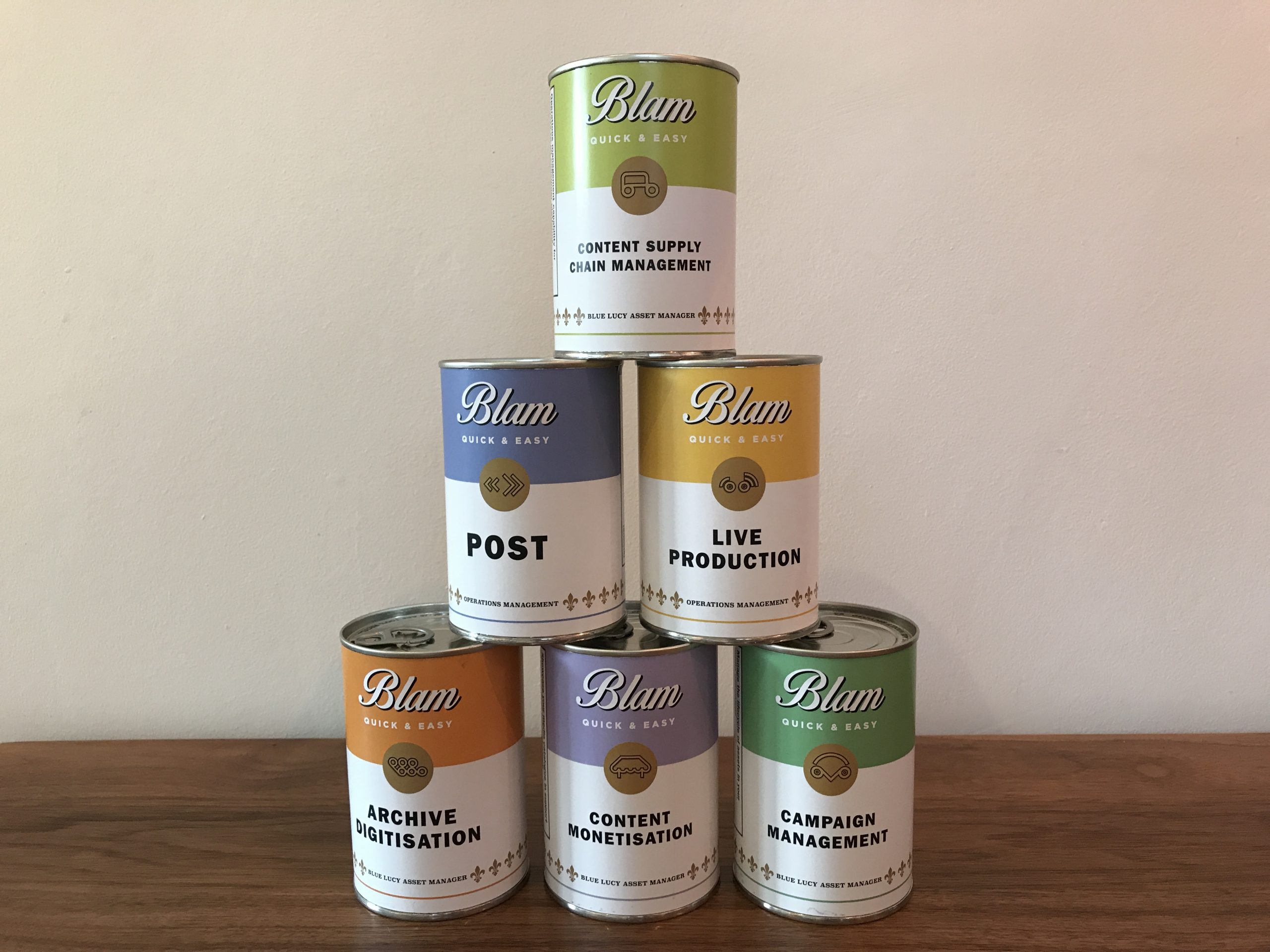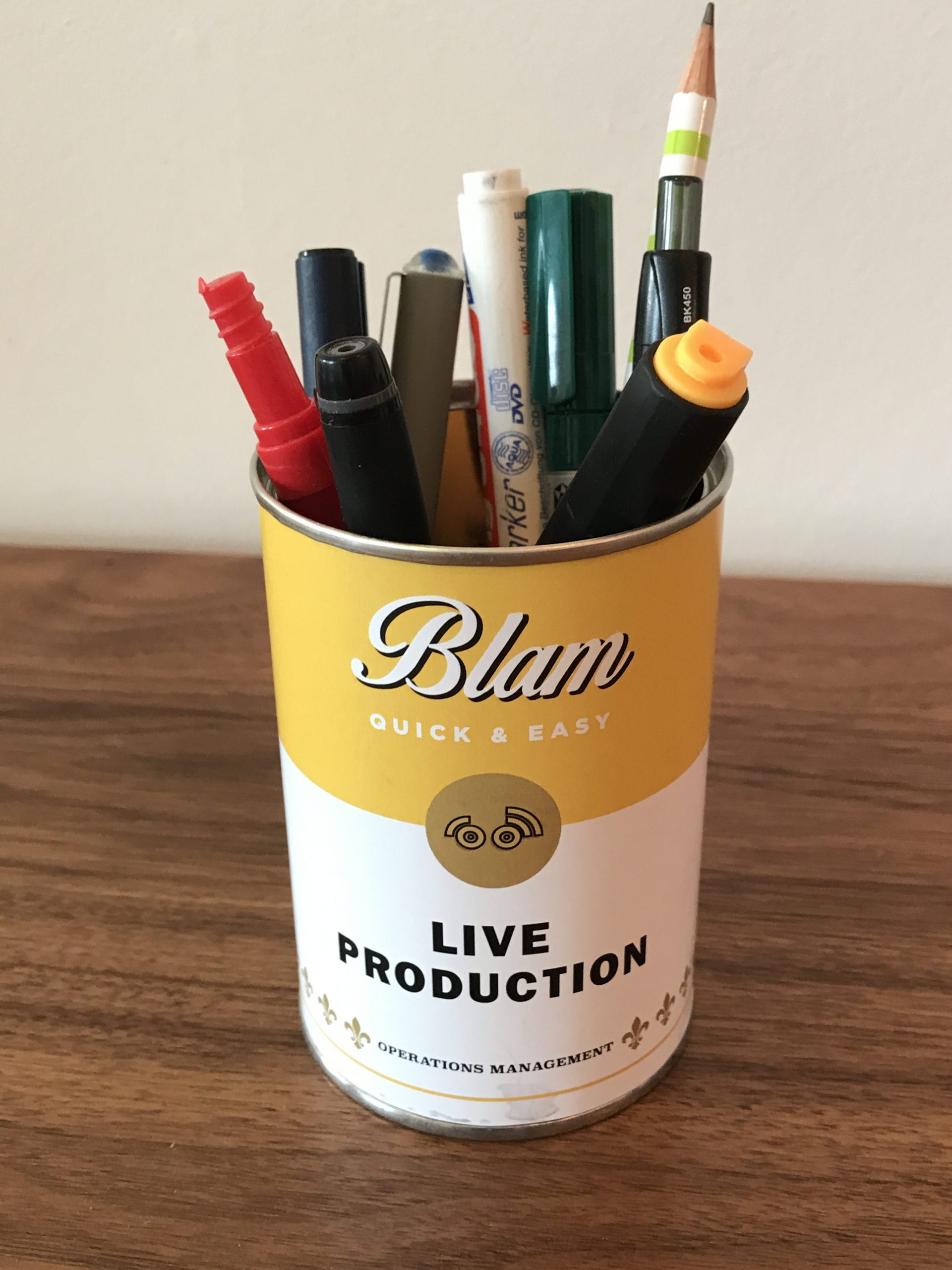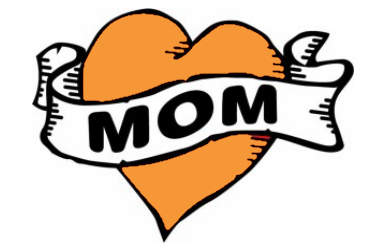





We are experiencing a fundamental shift in the way technology is provisioned in the broadcast and media sector, yet the procurement processes have remained largely unchanged in 20-years. Moreover, there is increasing frustration in the vendor community that process isn’t as rigorous as it should be. Is it time to review the approach to RFP?
One of our programme management consultants, who has an adage or anecdote for almost every aspect of our business, is often heard saying “if an RFP lands on your desk, you know it’s not for you.” This is usually followed by a collective sigh in our office, but the point is as sharp as the messenger: many technology Request for Proposals (RfPs) are not necessarily the new business opportunity that they appear to be.
Within our software business we have developed a stringent set of criteria which we use to assess all RfIs (Requests for Information), RfPs (Requests for Proposal) and PoCs (Proof of Concepts) and decide whether to respond or decline the invitation to participate. The range of criteria is broad but ultimately equates to our likelihood of winning the project, balanced against the cost and risk (opportunity cost) of bidding.
I imagine that this is a standard approach among vendors but, on discussing the issue with colleagues and competitors during IBC, I noted a marked increase in cynicism. Vendors are increasingly treating PoCs and RfP with suspicion. Views range from “We are being invited to tender just so the customer can beat down the price of [alternative vendor x]” to “Customer y is seeking some free workflow design” or the prosaic “They need three bids for internal audit, but you never know.” The underlying sentiment across the board is that procurement processes increasingly lack the rigor and integrity they once had, and I consider this detrimental to both vendors and customers alike.
While the software division of our business responds to these tender requests, a proportion of the Blue Lucy business remains pure consultancy; where we provide advice and expertise on projects or programmes without supplying software. For consultancy projects, we typically manage or support the technology procurement process – including dealing with RfIs, RfPs and PoCs from other vendors. So, as both poachers and gamekeepers (bad analogy) we thought we could share broad lessons to tender success from our experience over the years:
Ensure that you set the vendor engagement approach in the context of the project’s relative maturity. Before rushing to formally commission a weighty RfP, examine the maturity of the project or programme. Where are you in the process? If the business case and a target operating model aren’t clearly defined, then you probably aren’t ready to formally engage in a tendering process with an RfP or PoC request.
Of course, it may not be possible to prepare the business case or define the operating model without vendor engagement – i.e. looking at what is ‘out there’ in terms of capability. If this is the case, your request should be limited to an RfI.
Get the key information you need from an RfI
The outcome of the RfI will often inform the high level operating model and business case and will probably identify the likely vendors for the later RfP or PoC.
RfP Light and more Talking
The formal RfP – the phase in the procurement when you require vendors to provide a costed solution to your business requirements and target operating model – should also be kept lightweight. The quality of the RfP should not be based on its printed weight and more may be gained from a spreadsheet of prioritised requirements and an operational workflow diagram than a verbose and overly prescriptive tome.
PoC Should Prove Something
More on the PoC phase is set out in (5) below but we normally recommend limiting the PoC phase to the preferred vendor from the RfI stage. Be clear what the objectives of the PoC are – a key integration or proving a minimum viable end-to-end workflow. Both sides should be clear what success looks like.
The rigorous governance you apply to a programme or project should include the vendor engagement component, particularly in the RfP and PoC phases. Be fair and be seen to be fair.
There was a time when a conversation between a business customer and supplier was implicitly, mutually confidential, but increasingly business operators and vendors alike have sought to formalise this in NDAs. Non-disclosure agreements are designed to protect against the promulgation of non-public information about product capabilities or techniques as well as other confidential business matters. But they are routinely flouted.
In my opinion, the proliferation of the NDA has had the reverse effect on the disclosure of confidential information. Operators are naturally trying to ensure that they define and build the best systems possible, but doing this by sharing product information with a vendor of another product isn’t good form and is very likely to be in breach of the NDA. The technology innovation of tomorrow relies on respecting intellectual property today.
Change occurs in all projects and things change rapidly in this industry. The change management process set in the project governance should extend to the vendor engagement.
Project changes that may impact on the RfP process include a change in the objectives of the business or identifying a new potential vendor.
A change in business goals or objectives which alter the assessment criteria under which vendors are to be measured should be communicated to all tenderers. Modern software systems are inherently flexible, and it is likely that a response to an RfP has been crafted to focus the capabilities with the highest priority criteria. If the criteria change then allow the vendors to update their submissions.
If new vendors are identified during any part of the procurement process, ensure that they are taken through the same procedure and that all involved are kept informed if requirements evolve.
It is the PoC more than any other aspect of the procurement process that seems to cause the most heat in the vendor community. I suspect that this is because responding to an RfP may be viewed as a “sunk cost” in staff headcount, whereas a PoC will incur additional expense – such as infrastructure or writing software to a proprietary system which isn’t reusable.
Tom Gittins, CEO of Pebble Beach Systems wrote a very good piece for the IBC Daily back in September. Tom’s article is typically forthright, but balanced and constructive. In the spoken, rather than written, medium other suppliers are more vociferous. “We provided a 4-week PoC which cost us more than [large number] thousand pounds…..and [end user customer] decided to cancel the procurement process and build the system themselves, probably based on our architecture;” and “The workflow defined in the RfP was exactly what we had provided as part of the PoC and they award the contract to [another vendor], [expletive deleted.]”
As a software vendor, Blue Lucy has provided both paid and unpaid PoC systems in recent years and we too have felt that pain. But, as consultants we are clear: PoC or low-level design work should be paid for. If the fees involved merely cover a supplier’s costs the goodwill, focus and resulting quality of the outcome is immeasurably increased. To the customer there are some up-front costs, some of which will be apparently written-off, but this is more than outweighed by quality of the outcome and is ALWAYS less expensive than using an internal design team and clean whiteboard.
We have run two large projects as such in the last 18-months, both of which have achieved consensus and precision in the outcomes. None of the vendors, including those whose software does not form part of the ultimate solution, feel cheated or hard done by.
Always define and design the PoC in concert with suppliers and be clear about the aims.
There are generally no second prizes in a competitive tender process and outcomes are binary. In deference to the tenderers and the effort required to respond to even a simple RfP, it is important to provide constructive feedback. Ideally this should be a formal debriefing highlighting the strengths and weaknesses of the received proposal. This process can be painful for vendors and it shouldn’t be viewed as a further negotiating opportunity – it is invaluable in terms of lessons learned for the bid team and useful insight for the product management team.
Selecting a vendor or blend of vendors is only the start of the journey: you will have to work collaboratively through the delivery and transition to service phases, and for the lifetime of the systems you are building. This may be ten years or more. Establishing the partnership on the right footing is key to delivering projects successfully – and it starts at the very beginning.
The above guidelines have been forged through experience over the last 20 years and following them should help ensure the engagement is productive and fair. But shifting approaches to the implementation of technology may change the entire procurement process in the not-so-distant future.
How will the, welcome, trend toward cloud and SaaS operations impact the ‘traditional’ RfP and PoC process? We may be on the cusp of a functional shift. Comparatively, even the largest broadcast vendors are mere minnows in the rapidly expanding media services business if compared to Amazon, Google and Microsoft.
Once the scourge of the of the industry, these businesses are held up as role models, which the smallest supplier and the largest broadcasters aspire to emulate. But these businesses are not burning cycles and resources on RfP’s and PoC’s. If you want to use the cloud, you spin up the services you require and pay for the resources you consume, whether that be for a PoC or a fully featured deployment.
The world is changing, and the broadcast industry will need to adapt accordingly to retain the breadth of solution vendors and maintain innovation

We were back at Europe’s biggest broadcasting convention in September – demonstrating how Blue Lucy and the BLAM tackle media operations management bottlenecks and enable new opportunities from our usual spot in Hall 7 of the IBC Show.
We had a packed schedule with a record number of bookings being made in the run-up to the event, possibly a benefit of the show being held over the 3rd weekend in September. However, the show felt quiet in terms of footfall and big announcements, certainly on the, hitherto ceaseless, M&A front. In technology obviously lots of cloud – some of it real – but the stand-out was certainly the SMPTE approvals of standards within the 2110 envelope. The approval of many of these standards will mark the tipping point for content over IP. Standardisation affords assurance which should drive investment.
Back to the operational matters: Our big reveal at this year’s show was BLAM-in-a-Can – a series of six pre-packaged MAMs for quick deployment across a range of operational use cases, from content supply chain management to post production.

To mark the occasion, we gave away 300 cans filled with chocolate money and the opportunity to win a GoPro Hero for the most innovative re-use of the can. There is still a chance to enter with the winner being decided later this month so please post your pics on Twitter using and include #BLAMInaCan and @BlueLucyMedia or email them to enquiries@bluelucy.com
We also showed a number of new BLidgets – the building blocks behind the Blue Lucy Asset Manager’s workflow capability that provide management control of Blue Lucy plug-ins and access to 3rd party software and services.
Watch the IABM’s interview with Blue Lucy founder, Julian Wright to find out:
We weren’t great believers in industry awards until we won one. Each year IBC gives three awards for the most attractive, practical and effective exhibitions stands at the show and Blue Lucy was awarded the Best Use of Shell Scheme Space trophy for our “fun and eye-catching [pop art inspired] graphics.” With over 1700 exhibitors, spanning across 15 halls, we’re quite pleased that our stand stood out from the crowd.
Candice of Little Cricket PR for convincing us the Pop Art idea from Matt at Heavylight Design was a good one, Matt and Dickie of Heavylight Design for the concept and final designs, Clem and team at CoreModular for the reproduction and installation and finally the IBC Awards Judges, you know who you are, for excellent tastes.


Twenty or more years since digital Media Asset Management systems came into being a MAM implementation for many operators remains a daunting prospect. An off-the-shelf, packaged solution approach reduces time to implementation, minimises financial risk and delivers tangiable operational benefit.
The failure of high-profile initiatives means that, for many, MAM has become synonymous with large capital costs, a painful transition to operational service and, ultimately, unrealised benefits. Deferment of a MAM initiative is all too common and consequently media businesses suffer from inefficient workflows or miss out on new revenue streams.
Equally, many operators consider that the operational issues they face, be it throughput bottlenecks or new business objectives, do not require a big MAM implementation. We agree, and have cooked up BLAM-in-a-Can, an entry level packaged media and workflow management solution.
BLAM-in-a-can provides a quick and easy deployment to suit a range of operations – from content supply chain management to post production. Each package includes a core BLAM complete with the relevant connectors and plug-ins (BLidgets) to support the pre-canned workflow. BLAM-in-a-Can supports existing processes but drives efficiency through automation and task management.
BLAM-in-a-Can will suit many operations out of the can but can grow with your business needs. Additional BLidgets may be added to meet new requirements and long term value for many will come from the migration of services to the cloud.
In addition to BLAM-in-Can we have a number of new workflow BLidgets on show this year. These are largely focused on accessing 3rd party provisioned services as part of a BLAM workflow and demonstrate the openness and flexibility of BLAM.
BLidgets are the building blocks of the Blue Lucy Asset Manager’s workflow capability and enable operators to rapidly build process and task-driven workflows to deliver efficiency. BLidgets provide management control of Blue Lucy plug-ins such as transcode as well as data adaptors and processing connectors to a wide range of 3rd party systems and services. Using BLAM’s new workflow runner, operators can now download, install and even create their own BLidgets to create customised workflows.

It is BLAM-in-a-Can, however, that has caused the most excitement in our marketing department which has created a range of branded cans inspired by the Andy Warhol’s 1962 Campbell’s Soup Can piece -fitting in with our broader pop art themed stand graphics. 300 cans have been produced – including all six ‘flavours’ – but instead of soup, each can is filled with chocolate money representing the value that BLAM can bring to your operation. The chocolate is delicious and will give you that extra energy to get around the ever expanding show. In addition, one lucky visitor will pick up a can containing an Amazon streaming media player – so do stop by 7.G07 and pick up a can of BLAM.

When you have eaten the delicious chocolate money, please do dispose of the can responsibly. Naturally, they are recyclable, but we are also offering a GOPRO HERO Session Action Camcorder for the most innovative re-use. Please post your pics on Twitter using and include #BLAMInaCan and @BlueLucyMedia or email them to enquiries@bluelucy.com
See you in Amsterdam.

Video rights management used to be so much simpler………
We were quite surprised by the large response to last month’s blog on the rather dry topic of metadata. Of most interest to correspondents was the specific subject of video rights and rights management within an operation. This time we explore that subject in more detail and draw on some real word use cases that we see in news operations where the increasing use of user-generated content has complicated matters further.
The first consumer camcorder was released by Sony in 1983. It was a monster device so unwieldly that you had to rest it on your shoulder while you recorded to an internally stored VHS cassette. The difference between professional and consumer video equipment and quality was vast – so vast that any content recorded on a consumer camera was unfit for broadcast. And it stayed that way for a long time.
Up until as recently as ten years ago, the only place most of us watched any kind of video content was on TV. We might have hired a VHS or DVD movie from the local video shop occasionally, but the bulk of our viewing was limited to whatever broadcast, cable or satellite stations we had access to on our televisions. The only way we were likely to see footage shot by any-one other than a professional was when families gathered to watch home movies.
Because content generation was limited to a relatively small pool of contributors, and distribution was restricted largely to television – both of which were firmly controlled by the professional industry – the amount of content produced was limited, so keeping track of video content rights was reasonably simple. But all this has changed in the last decade.
The advent of video sharing sites, proliferation of smartphones with built-in cameras capable of recording broadcast quality video content and increasing bandwidth availability have culminated in a video content explosion. Now everyone is a producer and video platforms abound.
User-generated content (UGC) has become part of our everyday media landscape. YouTube celebrities have created careers out of it, most news bulletins feature footage from those caught up in big events, and it dominates our daily social feeds. As this consumer content becomes more commonplace, so these everyday video producers are becoming increasingly aware of the value of their contribution and their right to control how their video is used. And the previously simple task of managing video rights has become a whole bunch more complicated.
In the UK, copyright applies as soon as a video is made available to the public, no matter if the content has been specifically copyrighted or not. The 1998 Copyrights, Designs and Patents Act states that, for broadcast and cable programmes the duration of copyright is 50 years from the end of the calendar year in which the broadcast was made. When a video is published online, the copyright period lasts for the life of the copyrights owner, plus an additional 70 years.
Content distributors now need to have robust systems in place to track and manage video rights for individuals as well as corporate organisations across a myriad of distribution platforms. This means that rights metadata is now one of the most important datasets that video producers and distributors need to create, manage and track. Typically restrictions that need to be tracked in a clip’s video rights metadata include the following :
Many news operations rely on their MAM system to provide the tools for managing rights throughout the production process. Because these organisations deal with so many sources and distribution methods, by breaking down the newsroom rights management process, we can identify solutions for almost any media company’s needs.
Step 1 : Make it mandatory to record video rights information at ingest
Applying rights (restrictions) at the point of ingest is of the utmost importance – setting rights at ingest should be considered mandatory.
For known 3rd party agency ‘feeds’ which are file-based deliveries this is relatively straightforward. Received media is automatically imported into the MAM via FTP or watch-folders. The media object is typically accompanied with some associated XML which carries data about the story together with rights and usage details. This XML is automatically parsed by the MAM and the relevant metadata fields are set and populated. Other organisational rules defined within the MAM may also be set for particular types of media or sources. File-based deliveries from an organisation’s own field crews will follow a similar ingest path, although obviously the rights restrictions will differ.
Lines (baseband) recordings may be automated in terms of routing and initiating but the rights metadata will probably have to be manually assigned. Ideally customised drop-down menus should be created within the MAM software so that ingest operators that are responsible for scheduling recordings from outside sources can input as much information as possible into the system. Setting simple information, such as originator details, will enable the MAM to derive usage rights based on pre-set rules.
For less controlled, ad-hoc deliveries such as submitted UGC material, operators need to be quite structured as to the way material is imported into the production MAM. Material may arrive on a USB memory stick, attached to an email or uploaded through a web portal. Crucially, the delivery is highly unlikely to come with any inherent rights metadata. In these cases, it the broadcasters’ responsibility to ensure that a formal release agreement exists between the rights owner and the operator. Ideally this should be templated by the operator, but a telephone conversation followed up in writing via email often suffices. Leading MAM systems will allow this correspondence to be appended as a child object of the original media, but the rights metadata will, once again, need to be manually assigned when the content is ingested.
Regardless of how your media is obtained, or what you intend using it for, it’s important that all usage rights and assertions are captured in the MAM at the point of ingest so that producers and output editors can clearly see the bounds of usage. The creator of a piece of content may be happy that it is used in a breaking news situation but not in perpetuity and only on a traditional (non-internet) transmission channel for example.
Step 2 : Keep rights information visible throughout the production process
Like all metadata relating to an asset, the rights data ‘follows’ the object through the production lifecycle. When a producer is making shot or clip selections for a package it is important that the rights information captured at ingest is displayed in the MAM so that they can ensure the material is clear for the given distribution method.
Ideally there should be a tight coupling between the MAM and the editing tools so an operator can view rights information for material in project bins or on the timeline.
Step 3 : Don’t stop tracking rights when you archive
A good MAM should flag any issues with rights in finished packages prior to delivery to the channel or broadcast rundown . In order to do this the sequence or Edit Decision List (EDL) used to create the edit needs to be parsed by the MAM to ensure the source material used in the edit is cleared for distribution on a given platform at a given time.
When a package is finally archived, the links to the source assets should be preserved so that, if it is later restored to be used as source itself in another package, the original rights metadata is carried forward.
One of the challenges of using metadata to track video rights is that there is often inconsistency in metadata fields and terms between different systems and organisations. The IPTC video metadata Hub is working to solve this by creating standards for naming, managing and exchanging metadata across platforms and organisations.
Tracking and managing video rights might requires a bit of up-front planning and diligence throughout the process, but integrating your MAM throughout your workflow means you should be able to focus on the creating the best content without worrying about infringing on anyone’s copyright.
The driest aspect of media operations management is content metadata but well-structured and organised metadata schemas can pay significant dividends in driving operational efficiency. January is the perfect time of year to look at how this is structured, utilised and managed in your operation. Like Dry January it probably isn’t as onerous as it first appears and will equally deliver health benefits – well, operationally.
January, the Monday of the year. The festivities and over-indulgence of December are already a distant memory and, for those of us in the Northern Hemisphere, several long cold, dark months lay ahead. How very miserable. So universal has this sentiment become that Blue Monday (not New Order’s seminal 1980s synthpop record of the same name) is recognised as the most depressing day of the year
The more optimistic amongst us use January to make resolutions, declutter, stop drinking (for a while) or lose weight. These organised optimists use this time to tidy up and arrange so that the year starts off on the right footing. The theory being that the rest of the year will follow the organised structure defined at the outset. In media management operations the equivalent of the painful-yet-rewarding trip to the gym is to organise metadata schemas.
Still reading? good. Metadata is commonly, and rather glibly, described as “data about data” but its importance to a media organisation is second only to the assets themselves. Metadata helps media companies organise, manage and find their content – it’s the foundation on which media asset management systems and slick operations are built. It is hard to get excited about metadata, though. It’s not particularly interesting. But structuring, generating and tracking metadata can increase your media business’ efficiency exponentially – as well as saving and generating bundles of time and money.
The subject of metadata is an expansive one, metadata can be divided into countless types and categories. Some metadata is automatically generated by the equipment or software used to create or process the assets, while other metadata needs to be added manually. The types and amount of metadata that is required to support an operation will depend on a variety of factors including the size and type of the organisation. Metadata is a vast subject area but – akin to keeping those New Year resolutions realistic – we’ve limited this piece to, a very manageable, six of the most common, key metadata categories.

20 years ago computerised Media Asset Management systems MAM’s transformed broadcast and media operations – one way or another. In the period since these have slowly, and sometimes painfully, evolved into sophisticated media systems around which much of typical operation is centred. The breadth of functionality and capability of some modern MAMs is sufficient to warrant a new epithet.
A new Three Letter Acronym (TLA) entered the broadcast and media industry lexicon in 2016 – MOM. More prosaic than maternal this TLA stands for Media Operations Management. First observed in a Sony published paper in the early summer it was still to be heard in the halls of the Rai at IBC in mid-September. Rather than being ephemeral, vendor-specific marketing bullshit this abbreviation highlights a shift in emphasis in considering a media operation as a whole rather than a collection of media handling and management technologies.
This blog briefly explains why MAM just isn’t enough anymore and how a MOM strategy can help your media business thrive.
Before we can define MOM we should first review the meaning of MAM: Media asset management is the process of storing, cataloguing, indexing and creating relationships between media assets to aid their discovery (searching) and exploitation (creative use.) Media assets might include images, video, audio, graphics, animations and a variety of other content. For as long as there has been media we have sought to organise it, particularly if there is revenue attached to it. The ability to know where your assets are, find them and use them appropriately is a core requirement of every media operation, and, depending on the size of your organisation, you might use anything from an Excel spreadsheet to a Dropbox “folder structure” or “proper” MAM software underpinned by a structured database.
MAM systems are all largely evolutions of hand-written card files and ledgers, with a modern MAM likely to consist of browser-based tools which include content preview capability (video players) and provide simplified and intuitive operations such as drag and drop. MAM has latterly become a ‘thing’ rather than a process, when we refer to MAM now we refer to the tangible technologies that deliver the capability – “we have an X2000 MAM from ACME MAMs.” But some MAM vendors have extended their capability to the extent that the MAM term undersells the true power of the system. MOM, on the other hand, is still more of an approach than a ‘thing’
If you own or manage a production or media handling facility you already have ‘a’ MOM system in place. Your operational teams which manage the day-to-day business are doing MOM. They define processes, procedures and systems that run the business – they are your workflow engine. Management information and operational workflow is based on knowledge and is verbally communicated / driven. You use your X2000 MAM technology to organise your media during production or processing but MOM is largely human and insights are based on familiarity and experience.
There are many tools, such as project planning and booking systems, which help define process and manage these human tasks, but these tools often run in isolation from each other and, crucially, are disconnected from the MAM that is tracking the resource and deliverables assets.
Progressive MAM vendors are now integrating the traditional MAM functionality with operational management competencies – creating the new MOM capability. Extending and linking software systems to include workflow and task management, together with reporting and empirical management information can provide the agility that differentiates a business that survives from one that thrives.
Media Operations management tools enable facility managers to create workflows with automated functions, but also provide task management to drive the human operation. Where you would otherwise have to brief individual team members, book resources and manage delivery for individual tasks within a project, employing a media operations management system centralises communication, resource allocation and orchestrates the machines and the people. Linking the operational management tools to the MAM further streamlines project management by linking tasks to production assets and ensures that your creative teams utilise 100% of their time on creative work.
The real power of MOM is reporting, particularly real-time reporting. Media operations management tools should provide a view across multiple systems through a single unified presentation layer – enabling managers to identify issues and highlight opportunities. Having a birds-eye-view of an operation makes it easy to identify operational or resource (human or machine) bottlenecks and avoid duplicated effort. When integrated with human resource and facility booking systems, MOM tools help you manage capacity and identify where additional resources are required. In disconnected systems manual data collection and processing often misses issues or identifies them too late.
In conclusion, Media operations management is a ‘thing’ but probably not a single ‘thing’. MOM is underpinned by MAM, combines this capability with task-based workflow and machine automation but also provides business insights by providing a complete view of the end-to-end operation. Sounds good doesn’t it?
Blue Lucy’s Asset Manager has provided true MOM capability before the term entered the industry vocabulary. Hats off to those who coined the term as it articulates succinctly a new and exciting area for media operations. Get in touch to find out more about BLAM or to arrange a trial.

This year’s IBC was probably the most relevant for years. A genuine turning point for the industry. NAB earlier in the year felt like the end of the broadcast trade show as it has been for the last 20-years. Modern production and content delivery management tools sat at juxtaposition with their forebears, the two looking and operating more different than ever. The somewhat tired legacy marginalised the progressive future. Do you need to exhibit at a trade show to demonstrate tools running in the cloud anyway?
A couple of days before IBC opened, a walk past the freight storage areas gave the impression of same old, same old: truckloads of proprietary metal with cable looms were being wheeled into the halls. Some vendors were even boasting about how much hardware they had brought. No sign of SDI dying, declining or terminating here, and machines with buttons were front and centre. Would cloud be no more than a word on stand facia and ‘cloud based capabilities’ demonstrated from proprietary boxes?
A tour of the halls on the quiet Friday (probably caused by the lack of actual clouds in the sky over a picturesque Amsterdam) surprised – the software / cloud era was coming of age. A great number of the smaller vendors were demonstrating not only truly cloud-based tools and services, but the ease of integrating these. It has never been easier or cheaper to capture, create and distribute content to audiences.
Our own demonstrations relied on a handful of laptops accessing cloud-deployed BLAMs which were configured for various applications such as post-production and media logistics. We also took a small server fitted with a capture card to demonstrate our longest-serving baseband ingest plug-ins. We spoof the Flexicart, obviously, but even taking a server to demonstrate cloud-enabled tools felt unnecessary – everyone is IP, right?
Colleagues at Bonded Services, DAM Smart and Yapku attest to the need for software-based archive digitisation tools. But throughout the weekend there was a queue – a long queue – for our ingest product. Baseband (SDI) is still very much alive, with typical requirements ranging from archive digitisation and straightforward lines recording to fast-turnaround editing or catch-up redistribution of live programming. Given the number of new projects and technology-refresh initiatives that will use SDI as the core contribution barer, it seems like many are sticking with the tried and tested. At least for now.
Truly service-based, integrated architectures which do not differentiate between the cloud and the ground (on-prem’) operating models are the future. This was the IBC where the cloud-enabled service models moved (just) beyond the early adopters phase – but we shouldn’t forget that the legacy technology ‘landscape’ will be around for a while.
Hybrid operating models are the obvious near term vision, but this will require structured planning and expertise. This is very much Blue Lucy territory in terms of both software and consultancy. A future blog will cover a couple of recent projects which have enabled a seamless cloud migration but do get in touch to find out how BLAM can ease migration.
By way of contextualising the breadth of the ‘industry’ and to bring us all down from the clouds, we need to name check Ethan W. Hall from Keith Austin World Video. Ethan, you enthused about our pop-art themed stand graphics and we were struck, almost literally, by your flamboyant pitch. Ethan is in the market for unused tape stock – so if you are sitting on an unstriped archive do contact him at Kieth Austin World Video and try telling him that magnetic tape, must die.